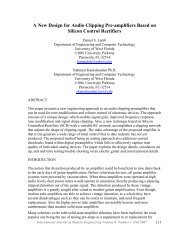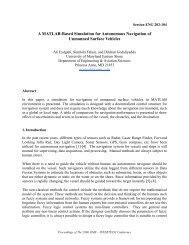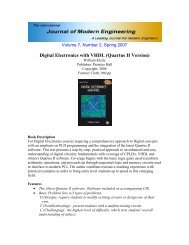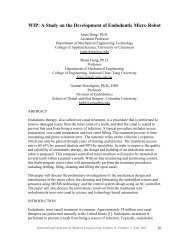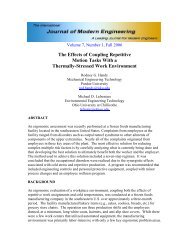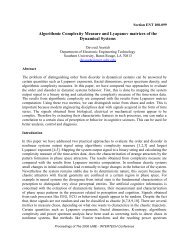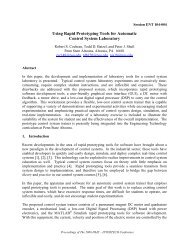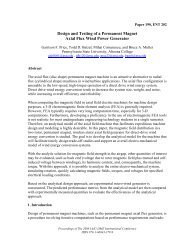Failure Analysis of Gas Turbine Blades - IJME
Failure Analysis of Gas Turbine Blades - IJME
Failure Analysis of Gas Turbine Blades - IJME
Create successful ePaper yourself
Turn your PDF publications into a flip-book with our unique Google optimized e-Paper software.
<strong>of</strong> gas turbines, where vanes and blades are subjected to high mechanical stresses and<br />
aggressive environments [9–23]. In Ni base superalloys, the presence <strong>of</strong> chromium is<br />
essential to assure high-temperature oxidation resistance, whereas other alloying elements are<br />
important to guarantee high-temperature strength, especially creep resistance. Other<br />
elements, such as aluminum and titanium, enable the precipitation <strong>of</strong> the γ′ phase<br />
( Ni3 ( Al,<br />
Ti)<br />
) during heat treatment, which strengthens the face centered cubic matrix ( γ<br />
phase) [24–27]. Another kind <strong>of</strong> phase is also very important for the mechanical properties <strong>of</strong><br />
nickel base superalloys (carbides). These particles are present in these alloys because it is<br />
very difficult to remove carbon during refining and because carbon is added on purpose to<br />
form carbides, which improve creep properties [24, 27].<br />
The aim <strong>of</strong> this work is to evaluate the creep-fatigue properties <strong>of</strong> the first and second stage<br />
blades under cycling duty. To identify this, a complete metallurgical investigation with<br />
mechanical analysis was carried out.<br />
Background<br />
The blades used in a gas turbine were damaged during servicing. The accumulated service<br />
time <strong>of</strong> the blades is more than 10 years. The blade material is specified as IN738LC alloy<br />
(Cr: 16; Co: 8.5; Ti: 3.4; Al: 3.4; Fe: 0.3; Mo: 1.75; W: 2.6; Ta: 1.7; Si: 0.1; balance: Ni).<br />
Figures 1 and 2 show the rotor and stator <strong>of</strong> this turbine, respectively. The first stage blades<br />
were badly damaged, while the second stage blades remained relatively whole.<br />
Visual Inspection<br />
The macroscopic features <strong>of</strong> the blades were observed by visual examination and<br />
photographic documentation. These inspections showed the different regions on the surface<br />
<strong>of</strong> the blades at the convex and concave sides.<br />
Figure 1: Deformation <strong>of</strong> Rotor <strong>Blades</strong><br />
Proceedings <strong>of</strong> The 2008 IAJC-<strong>IJME</strong> International Conference<br />
ISBN 978-1-60643-379-9



